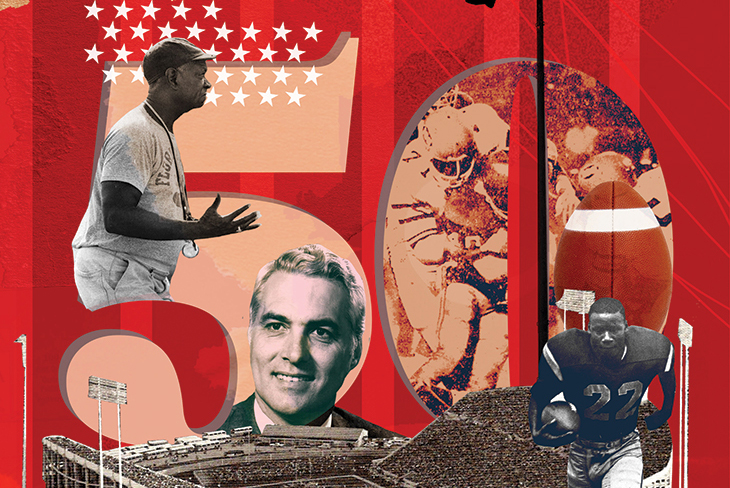Contact us
401 W. Kennedy Blvd.
Tampa, FL 33606-13490
(813) 253-3333
Fifty years later, it’s a treasured part of college football history. Fifty years later, it’s a wondrous memory, a back-and-forth contest that took everyone’s breath away. Fifty years later, it’s still an example of what can happen when people come together in the name of possibilities.

UT vs. FAMU, widely considered the first interracial NCAA football game, turns 50 on Nov. 29, 2019.

“Just the aura and the noise that was all around us, it was a positively electric, big-time feel,” said Jim Del Gaizo ’69, UT quarterback.
More UT News